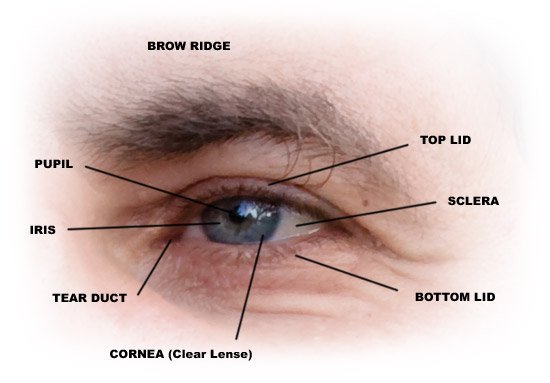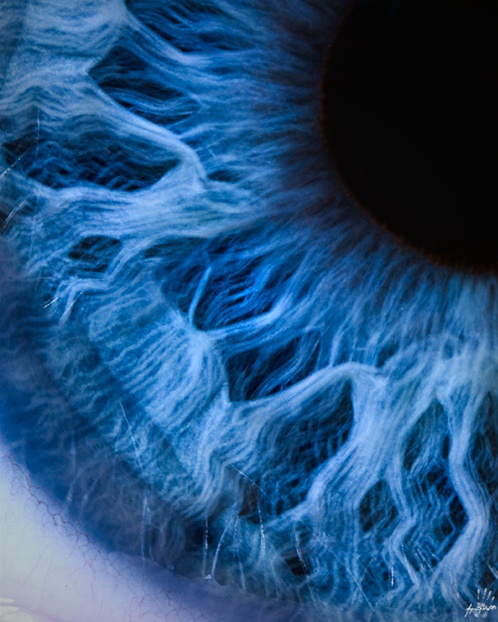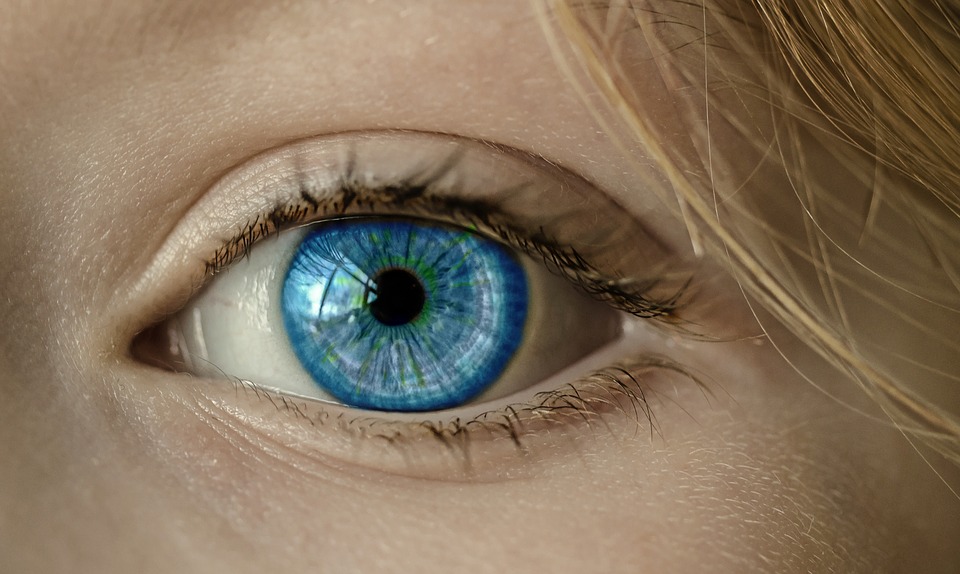Why do people have different eye colour?
Color Of Eyes
Eyes are organs of the visual system. They provide organisms vision, the ability to process visual detail, as well as enabling several photo response functions that are independent of vision. Eyes detect light and convert it into electro-chemical impulses in neurons.

The simplest "eyes", such as those in microorganisms, do nothing but detect whether the surroundings are light or dark, which is sufficient for the entrainment of circadian rhythms. From more complex eyes, retinal photosensitive ganglion cells send signals along the retinohypothalamic tract to the suprachiasmatic nuclei to effect circadian adjustment and to the pretectal area to control the pupillary light reflex.
Eye color is a polygenic phenotypic character determined by two distinct factors: the pigmentation of the eye's iris and the frequency-dependence of the scattering of light by the turbid medium in the stroma of the iris.
The iris is usually strongly pigmented, with the color typically ranging between brown, hazel, green, gray, or blue. A person's "eye color" is actually the color of one's iris, the cornea being transparent and the white sclera entirely outside the area of interest.

Despite the wide range of colors, the only pigment that contributes substantially to normal human iris color is the dark pigment melanin. The quantity of melanin pigment in the iris is one factor in determining the phenotypic eye color of a person.
Melanin is the most common pigment, and it is found in the eyes, hair, and skin. There are several types of melanin, including pheomelanin (which looks more red and yellow) and eumelanin (which tends to look brown and black). More of the former is found in blue and green-eyed people and the latter in brown eyed people.
HOW MUCH and WHERE the melanin is made in the eye is responsible for different colors?
There are two different layers in the iris, a front and a back one. In between the two layers is an area called the stroma.
The stroma is a clear tissue with many proteins floating around in it.One of these protein is collagen.
Almost all eye colors have a lot of melanin on the back layer of the iris. Most differences in eye color come from the amount of melanin made on the front layer.
For example, both brown and blue eyes have lots of melanin in the back layer. The difference is that brown eyes also have a lot of melanin in the front layer and blue eyes do not. So brown eyes are dark because lots of melanin in the front layer absorbs any light hitting the iris.
In blue eyes, though, light can pass right through the clear front of the iris and reflect off the melanin in the back of the eye. But the light doesn't reflect back through a completely empty stroma. The collagen in the stroma gets in the way of the light on its way back to the front of the eye. When the light hits the collagen it bends and looks blue.

Everyone has some kind of pigment in their iris, which usually includes a layer of melanin on the back of the iris. The only exception to this is for some people with albinism, who completely lack pigment in their iris.
So, technically speaking, everyone (cases of albinism excepted) has the same eye color. The difference comes with how it's perceived, which is due to the amount and type of melanin in the front layer of the iris and how light interacts with it.
The degree of dispersion of the melanin, which is in subcellular bundles called melanosomes, has some influence on the observed color, but melanosomes in the iris of humans and other vertebrates are not mobile, and the degree of pigment dispersion cannot be reversed. Abnormal clumping of melanosomes does occur in disease and may lead to irreversible changes in iris color.
Colors other than brown or black are due to selective reflection and absorption from the other stromal components. Sometimes lipofuscin, a yellow "wear and tear" pigment, also enters into the visible eye color, especially in aged or diseased green eyes.
Rare eye color

Amber colored eyes are extremely rare in humans. They consist of a solid orange/gold color that may contain lighter shades of the same pigment within the iris. This is an unusual occurrence that happens when the yellow pigment called pheomelanin (also known as lipochrome), is dominant within the iris.
Another common mistake people make is referring to amber eyes as hazel. Although similar, hazel eyes have a stronger presence of melanin with two very distinct colors within the iris(usually green/brown)and often contain many speckles or blotches of mixed hues.
White babies are usually born blue-eyed since there is no pigment in the stroma, and their eyes appear blue due to scattering and selective absorption from the posterior epithelium. If melanin is deposited substantially, there will be brown or black color, if not, they will remain blue or gray.

Irises (like fingerprints) are highly unique. Even genetically identical people, like twins, have different iris textures.
What colored eyes do you have?
http://genetics.thetech.org/ask/ask232
https://owlcation.com/stem/Rarest-Eye-Color-in-Humans
https://en.wikipedia.org/wiki/Eye_color
Mine are hazel. One day I wish to purchase green eyes.
I will wait 5-10 years to do that.
Great post!